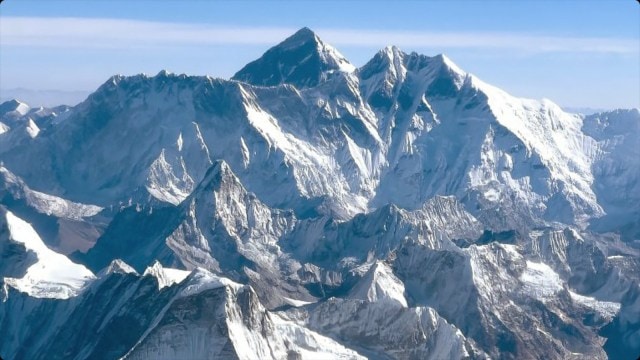Stay updated with the latest - Click here to follow us on Instagram
Experts confirm glacial lake outburst devastated village in Everest region in Nepal
Although no deaths have been reported so far, one person is reportedly missing, news portal MyRepublica said about the damage caused due to the flooded Thame rivulet, one of the tributaries of Dudhkoshi River.
 Mt. Everest(Photo: X/@subfossilguy)
Mt. Everest(Photo: X/@subfossilguy)Army officials, civic authorities and scientists on Saturday confirmed that the massive flash floods in a high-altitude village in the Everest region of Nepal were caused by two glacial lake outbursts leading to widespread devastation.
Hurtling down the steep slopes, carrying boulders, debris and muck with it, the floods devastated more than half of the homes in Thame village in the scenic Khumbu Pasang Lhamu Rural Municipality-5 on Friday.
Although no deaths have been reported so far, one person is reportedly missing, news portal MyRepublica said about the damage caused due to the flooded Thame rivulet, one of the tributaries of Dudhkoshi River.
“Authorities reported that around 93 villagers who fled to higher altitudes or were rescued are now being sheltered in an army camp, while 42 others have been temporarily placed in a nearby community building,” The Himalayan Times newspaper reported.
A team of experts and authorities were dispatched in a helicopter to inspect and monitor the disaster site and investigate the cause of the sudden flood and mudslide that struck the village. The helicopter went right upstream up to the glacial lakes in higher reaches.
“Following the aerial inspection, the Khumbu Pasang Lhamu Rural Municipality confirms that the flood was triggered by the outburst of a glacial lake, one of the many lakes situated above the valley,” The Himalayan Times reported.
The Kathmandu Post quoted officials to report that two of the five lakes formed above the Thame village had burst and flooded downstream areas.
Glacial lake outburst floods, or GLOF, are a sudden release of water from a lake fed by glacier melt that has formed at the side, in front, within, beneath, or on the surface of a glacier. Experts have warned that global warming poses major threats to glacial lakes and subsequent GLOFs in the Hindu Kush Himalayan Region.
Although no lives were lost, about 50 per cent of the Thame village has been severely damaged, and the remaining houses are uninhabitable.
Thame lies 16 km from Namche Bazaar, which serves as the entry to the Everest region. Located at about 12,500 feet above sea level in the Khumbu Valley, it is famous as the birthplace of legendary Sherpa Tenzing Norgay, who along with New Zealand’s Edmund Hillary was the first to summit Mount Everest, the highest in the world, in May 1953.
Meanwhile, the International Centre for Integrated Mountain Development (ICIMOD), a regional intergovernmental organisation representing the eight Himalayan nations, said the flood was caused by an outburst from Thyanbo glacial lake.
“Several glacial lakes lie upstream of Thame. Satellite images of the area dating back to 2017 obtained by ICIMOD from the European Space Agency’s Copernicus earth observation programme show these lakes constantly changing in size. Researchers at ICIMOD confirm that some of them frequently expand and contract, making them susceptible to breaches,” the ICIMOD said in a statement.
Tenzing Chogyal Sherpa, ICIMOD Cryosphere Analyst and founder of the #SaveOurSnow campaign, from the Solukhumbu region, said, “This flood swept away parts of a village I know intimately well, where friends, neighbours and relatives live, with ancestral ties going back generations.” “It is a painfully personal reminder of the devastating impacts of temperature rise on mountain communities. Millions of people in the mountains have contributed literally nothing to greenhouse gas emissions, but face the catastrophic impacts of these emissions with ever-increasing frequency and severity,” he said.
“Climate change is a crime scene. The glaciers are making it visible. We cannot look the other way,” said Miriam Jackson, Cryosphere lead for ICIMOD.



- 01
- 02
- 03
- 04
- 05




























